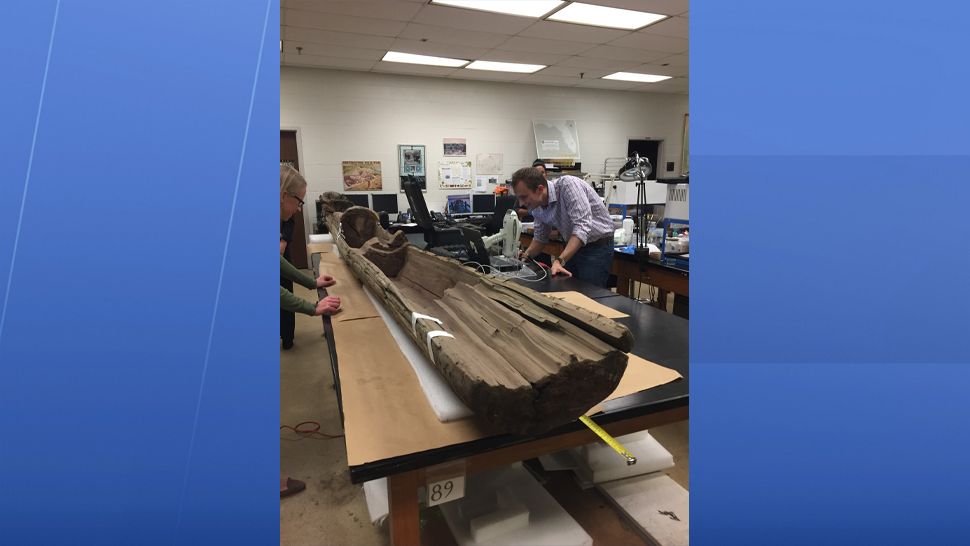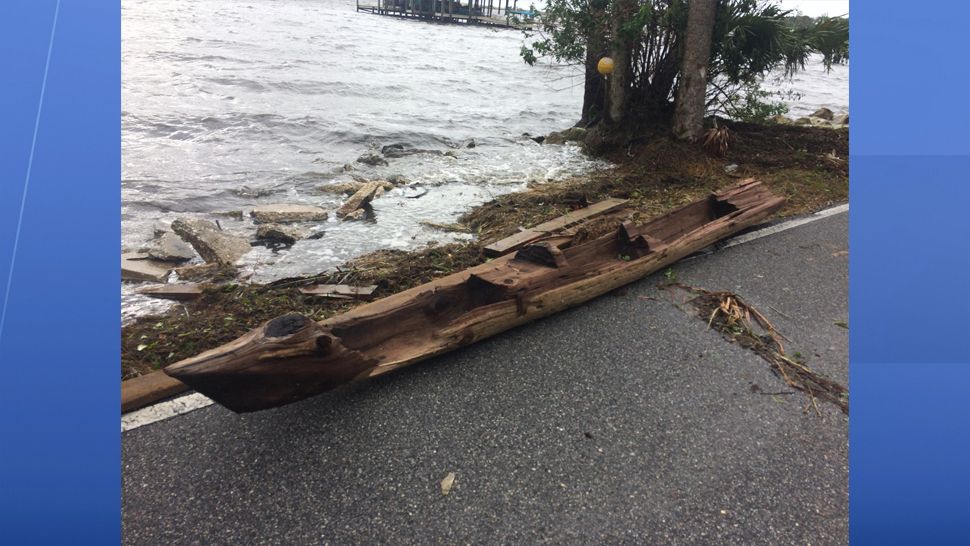BREVARD COUNTY, Fla. -- So many hurricane stories are ones of loss -- but this is a story of discovery.
- Photographer found dugout wooden canoe after Irma
- Archaeologists studied wood to discover age of canoe
- Canoe made from red cedar which is uncommon in FL
In the shadow of Cape Canaveral, the site of the most advanced technological transportation, is discovered one of the most elemental modes of travel.
One year later and the mystery of the Hurricane Irma Cocoa canoe remains.
One Sept. 11, 2017, photographer Randy Lathrop set out to document the aftermath of the storm and discovered an unearthed piece of history -- a wooden dugout canoe.
Archaeologists quickly and secretly re-submerged the canoe to preserve it until they could transport it safely to the state's archeology labs in Tallahassee to test the wood's carbon levels and study its tree rings to gauge the canoe's age.
The tests came back with three potential date ranges:
- A 50% probability the canoe wood dates from 1640-1680
- A 37.2% probability the canoe wood dates from 1760-1818
- An 8.6% probability the canoe wood dates from 1930 or later
“That does come up every once in a while,' said Tiffany Birakis, Assistant Curator at the South Florida Museum in Bradenton. “But it could be that it was used over a long period of time it could’ve been modified over that time, and those samples could’ve been contaminated with objects and chemicals from different time periods. That’s one possibility,” said Birakis.
The second test done on the Cocoa canoe, a tree ring study called dendrochronology, was inconclusive due to the type of wood the canoe is made of, red cedar.
“You don’t really find red cedar canoes in Florida, so it’s really hard to compare it to anything in the database,” said Birakis.
There are 400 canoes documented in Florida made of pine and cypress, vessels once used for fishing, transportation, and trade.
In fact, this state has the highest concentration of wooden dugout canoes in the world, and yet this red cedar Cocoa canoe is one of a kind.
“It's surprising it’s actually the only one documented in Florida, so whenever we find an anomaly like that that’s exciting for scientists because right when you think you’ve kind of had it figured out, you knew it all, there’s this new object that raises questions that you didn’t even know you had right?” said Birakis. “It can be a little more challenging to study but archaeologists love that challenge.”
The canoe will return to Brevard County in late September for the community to enjoy.
Both archaeologists and curators say having these types of artifacts on public display greatly enhances our understanding of people who came before us.
“People in the past in many ways — they’re not that much different than we are,” said Archaeologist Bob Austin, from the Alliance for Weedon Island Archaeological Research and Education, who helped unearth a 1000-year-old, 39-foot canoe on Weedon Island in St. Petersburg in 2011.
The Cocoa canoe will return to where it was first discovered.
“This is a place that’s been occupied for 10,000 years or more and and it’s right here in your backyard,” said Austin. ”I think seeing something like this brings it home to people.”
Cultures may change, technology may advance, but life along the water remains the same. And scientists are hopeful new technology will arise that will help solve the mystery of the Hurricane Irma canoe.




